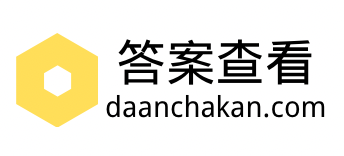【单选题】【消耗次数:1】
____ money, she is quite rich. However, this does not mean that she is happy.
①
Concerning
②
As to
③
In terms of
④
In the light of
参考答案:

纠错
相关题目
【单选题】
_____money, she is quite rich. However, this does not mean that she is happy.
①
Concerning
②
As to
③
In terms of
④
In the light of
【单选题】
9.She does not_____ that she owes the money, but she just wouldn’t like to return it.
①
argue
②
. dispute
③
think
④
agree
【单选题】
She is quite capable and can be depended on in an __________ .
①
affair
②
accident
③
incident
④
emergency
【单选题】
She resorted to ____ when she had no money to buy foods for her children.
①
have stolen
②
steal
③
stole
④
stealing
【单选题】
She resorted to _____ when she had no money to buy foods for her children.
①
have stolen
②
steal
③
stole
④
stealing
【判断题】
She plays the piano better than she does the guiter.此句中的“does”替代了谓语动词“plays”
①
正确
②
错误
随机题目
【多选题】
令 F(x): x 是角, H(x, y): x 和 y 是相等的, L(x, y): x 与 y 是对顶角,则命题“相等的两个角未必都是对顶角”符号化不正确的有:
①
$x(F(x) ù ($y(F(y) ù H(x, y) ù ?L(x, y))).
②
xy(F(x) ù F(y) ù H(x, y) ? ? L(x, y))
③
$x(F(x) ù ($y(F(y) ù H(x, y) ? ?L(x, y))).
④
xy(F(x) ù F(y) ù H(x, y) ù ? L(x, y)).
【多选题】
将命题“小王学过英语和法语”用0 元谓词符号化合适的有:
①
令 F(x): x 学过英语; G(x): x 学过法语; a: 小王. 符号化为F(a)ùG(a)
②
令 F(x): 小王学过x; a: 英语; b: 法语. 符号化为F(a)ùF(b)
③
令 L(x, y): x 学过 y; a: 小王; b1: 英语; b2: 法语. 则符号化为L(a, b1)ùL(a, b2).
④
令 P: 小王学过英语; Q: 小王学过法语. 符号化为PùQ。
【多选题】
下面关于集合的笛卡尔叉积,不正确的有:
①
若 A×BíA×C, 则一定有 BíC 成立;
②
(A∩B)×(C∩D)=(A×C)∩(B×D);
③
(A∪B)×(C∪D)=(A×C)∪(B×D);
④
(A-B)×(C-D)=(A×C) - (B×D)。
【单选题】
用等值演算法判断公式“<img class=jc-formula style=vertical-align: middle; src=https://huaweicloudobs.ahjxjy.cn/09825764C15E56B1CFE3099F64BC5193.png data-tex=\neg /> (p<img class=jc-formula style=vertical-align: middle; src=https://huaweicloudobs.ahjxjy.cn/D50FEE5510C853C83F78D440017D8E6B.png data-tex=\wedge />q<img class=jc-formula style=vertical-align: middle; src=https://huaweicloudobs.ahjxjy.cn/F388E7EE9892B38FECEEB653227F230A.png data-tex=\mapsto />q)”的类型:
①
重言式
②
矛盾式
③
可满足式
④
无法确定
【判断题】
令 F(x): x 喜欢步行, G( x): x 喜欢骑自行车, H(x): x 喜欢乘汽车,令前提: x(F(x) ? ?G(x)), x(G(x) ú H(y)), $x?H(x),则 xG(x) 是其有效结论。
①
正确
②
错误

